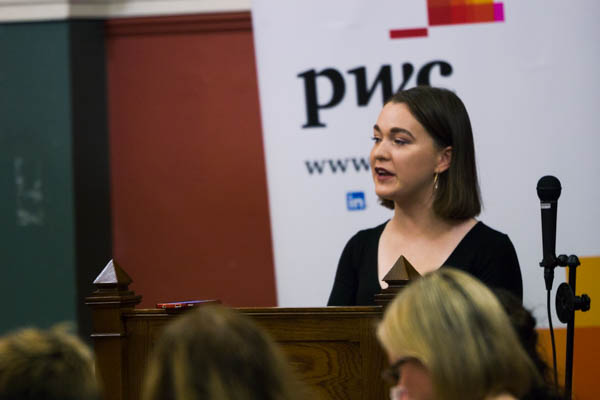Forty-six per cent of society heads in Trinity are female, despite women making up 59 per cent of students, according to the latest findings from a College equality report seen by The University Times.
The Annual Equality Monitoring report for 2016/17 has found that female society heads are slightly underrepresented in Trinity, with more men chairing societies.
The figure, which is part of a larger report on the role played by the gender, race and other characteristics of staff and students in the College, reflects an overall lack of gender balance in the College. The report notes that the figure “may be more significant” when it is considered that the majority of students who participate in societies are female undergraduates. This is the first year the figures have been collected, however, so it is hard to see a long-term trend.
Speaking to The University Times, Aoife Crawford, Trinity’s Equality Officer, explained that the idea for collecting these figures came after they looked at senior staff leadership within the university. “We tried to think, well, what might be the equivalent that we can look at gender equality in leadership style positions amongst students?”, she said.
Crawford said that she believes that these figures are “really important if you think about the long-term career trajectory” of students. She explained that “student life is not limited to the classroom” and while the figures aren’t balanced yet, “it’s not within immediate significant concern”.
Speaking to The University Times about the disparity between the number of female undergraduates and female chairs, last year’s Auditor of Dublin University Law Society (Law Soc), Hilary Hogan, said that the “same issues that crop up everywhere about female leadership and achievement are visible in those figures” and there is “no reason” why societies might be immune.
Hogan explained that while these figures may not seem to represent much, they may provide “an early indicator of female representation in areas such as politics and senior positions in the workplace”.
She noted that women are more likely to apply for a senior role if they have had previous experience in a leadership position. “Ensuring gender equality at college society level will help a lot of women achieve their potential in years to come”, she said.
During her time in university, Hogan found that often the women most competent and experienced for a particular position had to be encouraged “over and over again” to run for a position. She also found that even from her own perspective as Auditor, she worried “that people wouldn’t like me if I ran the society”. She doesn’t believe male candidates for positions experience the same fears: “I think girls worry, even subconsciously, that other people will see them as overly ambitious or arrogant if they put themselves forward for something.”
Speaking to The University Times, Sadhbh Sheeran, last year’s Chair of DU Amnesty, said: “I can’t think of a single time I encountered sexism.”
There are no barriers based on gender, she said, pointing to times when she sat on all-female committees. Trinity is a “place where everyone is very aware of sexism”.
Work is still being done by societies to encourage more women in leadership. Numerous societies organise events encouraging women to run for senior positions and female-led panels are quickly becoming the norm in debates in college.
“That culture of encouragement and support is something that every college society should try to emulate if they want to see more female leaders”, Hogan said.
The report also showed that both Trinity College Dublin Students’ Union’s (TCDSU) forum – an executive body of union officers – was evenly balanced in 2016/17 with 11 male and 11 female members. The Graduate Students’ Union (GSU) Executive Committee in 2016/17 saw nine female and seven male officers. The GSU class representatives were also predominantly female, with 61 per cent female and 39 per cent male. Despite these figures, however, the presidents of both unions are currently male and women have traditionally been absent from races for TCDSU president.







